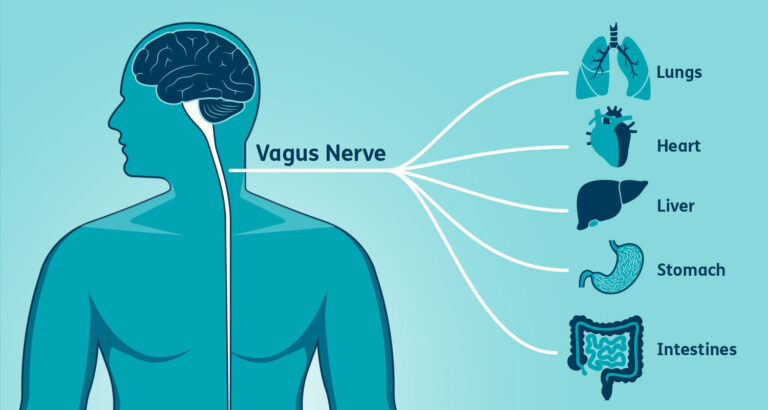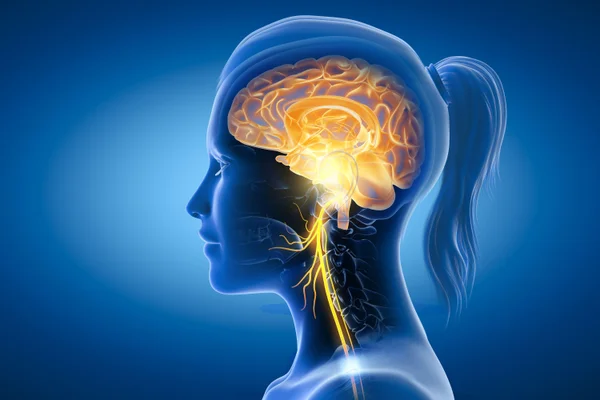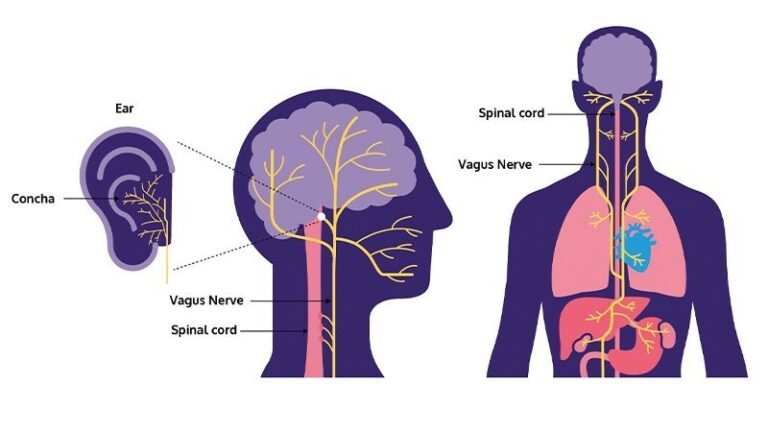Curing Vagus Nerve with Yoga
In the ever-evolving landscape of holistic well-being, individuals are increasingly drawn towards alternative practices that promise a harmonious blend of mental and physical health. Yoga, an ancient discipline originating from India, has transcended cultural boundaries to become a global phenomenon. Within the expansive world of yoga, a newfound focus has emerged on the intricate connection between specific poses and the vagus nerve. This enigmatic nerve, a vital component of the parasympathetic nervous system, governs critical bodily functions such as digestion, heart rate, and stress response. Unveiling the therapeutic potential of yoga, practitioners have unearthed a series of poses crafted to specifically stimulate and tone the vagus nerve. This article embarks on an insightful journey into the realm of Vagus Nerve Yoga Poses, exploring their profound potential in fostering overall well-being.
Understanding the Vagus Nerve:
Before delving into the intricacies of Vagus Nerve Yoga Poses, it’s imperative to develop a nuanced understanding of the vagus nerve. Revered as the “wandering nerve,” this cranial nerve extends its intricate web from the brainstem to various organs in the body. Functioning as a bidirectional communication highway between the brain and internal organs, the vagus nerve profoundly influences critical physiological processes, such as heart rate, digestion, and respiratory activity. A well-functioning vagus nerve is intricately linked to improved mood, reduced inflammation, and enhanced overall health.
Vagus Nerve Yoga Poses: A Holistic Approach to Wellness
- Deep Breathing Exercises: Delve into diaphragmatic breathing, also known as belly breathing, to activate the vagus nerve. Focus on slow, deliberate breaths to fully engage the diaphragm and amplify the soothing effects on the nervous system.
- Neck Stretches: your routine with gentle neck stretches, fostering the stimulation of the vagus nerve. Slowly tilting the head from side to side or incorporating gentle neck rotations can release tension and enhance vagal tone.
- Child’s Pose (Balasana): Immerse yourself in the restorative bliss of Child’s Pose. Kneel with your buttocks resting on your heels, stretch your arms forward, and lower your chest to the ground. The gentle pressure on the chest and abdomen serves to stimulate the vagus nerve, promoting a profound sense of relaxation.
- Bridge Pose (Setu Bandhasana): Elevate your well-being with Bridge Pose, lifting your hips towards the ceiling. Engaging the neck and throat muscles in this pose stimulates the vagus nerve, contributing to relaxation and balance.
- Fish Pose (Matsyasana): Embrace the expansive benefits of Fish Pose by arching your back and lifting your chest towards the sky. This posture encourages expansion in the chest and throat area, serving as a catalyst for vagal nerve stimulation.
Conclusion:
The integration of Vagus Nerve Yoga Poses into one’s wellness routine represents a harmonious fusion of ancient wisdom and modern understanding. These poses, designed to engage and invigorate the vagus nerve, offer a promising avenue for enhancing overall health. From stress reduction to improved digestion, the potential benefits are as diverse as the poses themselves.
Precautionary Note:
As with any transformative practice, it is crucial to approach Vagus Nerve Yoga Poses mindfully and with due consideration for individual health circumstances. Prior to embarking on any new exercise regimen, particularly for individuals with pre-existing medical conditions, consulting with a healthcare professional is paramount. A doctor’s guidance ensures a personalized approach, aligning yoga practices with overall well-being and maximizing their positive impact.
In conclusion, Vagus Nerve Yoga Poses stand as a beacon of holistic health, yet their incorporation should be approached with awareness and professional guidance for optimal and sustainable benefits.




